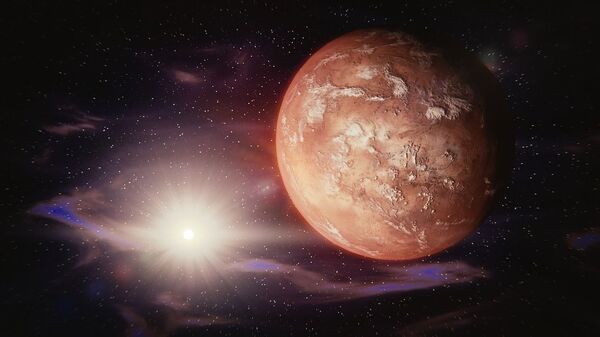As mankind continues to improve its knowledge of Mars, scientists continue to ponder whether the enigmatic Red Planet actually harbors life, and if it does, then where exactly one should look for it.
According to space.com, this issue was thoroughly explored by “astrobiologists and other experts” during a conference at the National Cave and Karst Research Institute in Carlsbad, New Mexico, that was held in November.
"The surface of Mars is a very oxidizing, radiation-heavy environment where liquid water is not really stable for an extended amount of time," said Vlada Stamenkovic, a research scientist at NASA's Jet Propulsion Laboratory in Pasadena. "It's the worst place to look for life-sites on Mars. Groundwater might be the only habitat for extant life on Mars, if it still exists today."
The media outlet also notes that researchers who attended the conference pointed at the "numerous potential cave entrances" spotted on Mars by orbiting spacecraft, wondering whether lava tubes could be "prime microbial real estate" on the planet.
Penny Boston, senior advisor for science integration at NASA's Ames Research Center, noted, however, that "there's much to be done to seek extant life, and certainly extinct life, in a variety of environments on Mars", adding that "we all recognize that there's not just a single way to go" in this quest.
"My own personal opinion is that it's time to line up missions with what the community is seeing in terms of return on investment versus the difficulty of accessing any particular environment," she explained. "It has been shown, with Mars, a campaign to systematically look for the water and now probe other aspects of habitability have yielded a tremendous amount of science."
Meanwhile, Monica Grady, a professor of planetary and space science who was recently installed as chancellor at Liverpool Hope University, argued that "it's almost a racing certainty" that life exists beneath the ice in the oceans of Europa, one of Jupiter’s moons.
She also agreed that if life actually exists on Mars, then it’s located beneath the planet’s surface where "you're protected from solar radiation" and therefore "there's the possibility of ice remaining in the pores of the rocks, which could act as a source of water".

